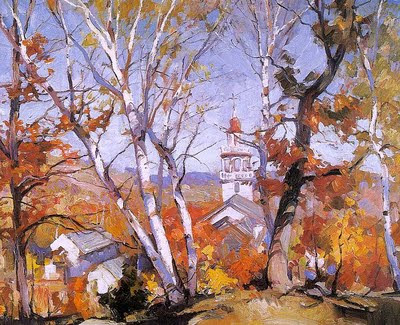 Maynard Dixon, The Forgotten Man
Maynard Dixon, The Forgotten Man
Here is a question I received lately.
Bullet #2 about shapes and masses kept large, is something I want to make work for me better- can keeping the value the same within the mass, and keeping lines soft, enough to get a bunch of little objects read as one unit?
Ms. Prim N. Shrivley
Ms. Prim;
Keeping your masses simple and your shapes large is one of the skills that develops over time. It is part observation and part installation. It results in a breadth of vision that can please the viewer with clean design and lend dignity and import to subjects that are mundane or commonplace. Here are some bullets;
- The idea is to subordinate the smaller variations or details to the larger shape on which they ride. Look at the Maynard Dixon above, if you squint at the mans jacket you will see that it is really just a small light area and a big dark. Notice the shadow of the lapel and the shadow next to that where the sleeve sits against the side of the coat. Those deep shadows are only a little different than the area around them. They have been subordinated to the larger shape of the jacket shadow. The passage says DARK JACKET with shadows, rather than, dark jacket WITH SHADOWS.
- This is a matter of emphasis. You can look at any scene in two ways, piecemeal, that is as an inventory of its parts, or you can see it broadly. Seeing broadly detail is minimized and the whole scene is apprehended in its entirety. The first time I was told about this I didn't get it at all. I eventually learned to apply it, but for me it was a long process. Ives Gammell (my teacher) used to tell me, don't look into your shadows. He meant to get the "big look" rather than scrutinizing the variations within the shadow field.
- Squinting will simplify the the shapes in a scene and help you get the idea BUT, really this is a convention. This is a deliberate simplification of the little stuff in order to sake the big stuff dominant. Any time you paint details you can imagine turning down the volume on them a little.
- Connecting lights and connecting dark shapes are both ways of helping along the "big look".
- Look again at the painting up top, notice the marching trousers behind our dejected hero. See how simplified they are? They are just lights and darks, in all of those pant legs and skirts there is one (1!) fold. There is nothing there to hang up your eye. This gives the painting an artful look. Vision is busier than this. This formalizing and distancing makes the image read as something special, an altered more acute and discreet vision.
- Edward Hopper used this all the time. Below is "Earl Sunday Morning". This picture has had the hell simplified out of it. There is nearly no detail. Look at the awning in the middle of the painting for instance. It is just a long shape. there are no folds or details within it because Hopper left them out. There are no little brick details in that facade either.
 I will return to this subject again in my next post.
I will return to this subject again in my next post.














